Magento SEO in 2026: Proven Strategies to Rank Higher and Boost Sales (50+ Tips)

Magento SEO is the backbone of every thriving Magento 2 store — it’s the key to attracting customers organically without depending solely on paid ads. In 2026, mastering SEO for Magento is no longer optional; it’s essential for competing in a crowded e-commerce landscape. Whether you’re launching a new Magento e-commerce site or refining an established store, this Magento SEO guide will serve as your roadmap to stronger visibility, higher search rankings, and more conversions.
With advanced built-in tools, SEO in Magento 2 gives merchants powerful ways to optimize right from the admin panel. Yet success depends on knowing how to apply Magento SEO strategies correctly — from refining URLs and boosting page speed to optimizing content, navigation, and mobile-first experiences.
In this updated checklist, we’ll walk you through 55 actionable Magento SEO tips across 12 categories designed for 2026. You’ll discover how to fix common SEO issues, structure your Magento site for Google’s latest algorithms, and apply best practices that prevent costly mistakes. If you want to unlock the full potential of SEO in Magento 2 and scale your organic traffic sustainably, this guide is where the journey begins.

Table of contents
- What Is Magento SEO and Why It Matters in 2026
- Magento 2 SEO Trends in 2026: What Merchants Need to Know
- 55 Magento SEO Tips for 2026: Complete Checklist to Boost Search Visibility, UX & Conversions
- 15 Common SEO Mistakes Most Magento Stores Make (and How to Fix Them)
- Magento 2 SEO Tools & Extensions: Must-Have Solutions for 2026
- Final Words: Unlock Your Magento SEO Potential in 2026
- Frequently Asked Questions About Magento SEO
What Is Magento SEO and Why It Matters in 2026
Magento SEO is a specialized approach to search engine optimization designed for Magento-powered e-commerce stores. Unlike generic SEO tactics, SEO in Magento 2 must align with the platform’s structure, performance features, and customization options. The goal is simple but vital: boost your store’s visibility in search engine results pages (SERPs), attract qualified organic traffic, and turn visitors into paying customers.
In 2026, Magento e-commerce SEO is no longer just a nice-to-have — it’s mission-critical. With more businesses moving online and AI-driven search shaping how buyers discover products, a finely tuned Magento SEO strategy can define whether your store gets found or buried beneath competitors. And SEO isn’t just about sprinkling product keywords like “buy shoes online.” It’s a comprehensive playbook that covers site architecture, Core Web Vitals optimization, mobile-first design, structured data, and content that matches user intent.
What sets SEO in Magento 2 apart is its powerful mix of built-in functionality and flexibility. Native features like XML sitemaps, canonical tags, and meta configuration provide a strong starting point, while extensions and advanced customizations let you fine-tune technical SEO. Merchants who know how to do SEO on Magento can significantly improve crawlability, indexing, and ranking potential.
Why does this matter? Because SEO for Magento 2 isn’t just about higher rankings — it directly impacts user experience, brand trust, and conversion rates. Fast load times, clear navigation, and optimized content make your store more appealing to shoppers and search engines alike. Effective SEO for Magento ensures you’re not only visible but also credible and conversion-ready.
Whether you’re a developer optimizing technical performance, a store owner aiming to scale traffic, or a digital marketer running campaigns, applying the right Magento SEO tips in 2026 is the difference between growth and stagnation.
Magento 2 SEO Trends in 2026: What Merchants Need to Know
The landscape of Magento SEO in 2026 looks very different from just a few years ago. With Google rolling out AI-driven search features like the Search Generative Experience and buyers increasingly using digital assistants to shop, merchants can no longer rely on outdated tactics. Staying ahead means adapting your SEO in Magento 2 strategy to align with these new realities.
AI Reshaping Magento SEO
Search engines are now powered by AI that prioritizes context, relevance, and user intent. For Magento merchants, this means product pages and category descriptions need to move beyond keyword stuffing and toward rich, structured content that answers specific customer questions. Leveraging schema markup, FAQs, and long-tail product descriptions can help your store stand out in AI-powered SERPs.
Voice Search Optimization
With more consumers shopping via smart speakers and mobile assistants, voice queries are becoming central to SEO for Magento 2. Optimizing for natural language phrases, question-based keywords (“Where can I buy…?”), and local search ensures your Magento store shows up in voice-driven searches.
Core Web Vitals and Performance
Google continues to reward sites that load fast and deliver seamless experiences. Magento 2 gives merchants the flexibility to address Core Web Vitals by leveraging caching, CDNs, and optimized images. Investing in performance enhancements directly supports both magento ecommerce SEO and conversions.
Mobile-first Indexing
In 2026, mobile is no longer secondary — it’s the primary index Google uses to evaluate your store. A responsive Magento 2 theme, fast-loading mobile assets, and simplified navigation are all must-have Magento SEO tips.
Actionable Takeaways for Magento 2 SEO in 2026
- Use structured data and schema markup to help search engines interpret product details.
- Optimize for conversational queries and long-tail keywords to capture voice search traffic.
- Regularly audit your store’s Core Web Vitals using tools like PageSpeed Insights or Lighthouse.
- Prioritize mobile UX — menus, checkout flows, and product pages should feel natural on any device.
By aligning with these trends, you ensure Magento and SEO work hand-in-hand to future-proof your visibility and keep your store competitive in a rapidly evolving search landscape. Now, let’s be more specific on the particular steps you should take to follow the Magento 2 SEO trends of 2026.
55 Magento SEO Tips for 2026: Complete Checklist to Boost Search Visibility, UX & Conversions
In 2026, success in Magento SEO is about more than keywords — it’s about delivering speed, usability, and content that search engines, AI tools, and customers value equally. Whether you’re a store owner fine-tuning performance, a developer improving crawlability, or a marketer planning campaigns, these expert-backed Magento 2 SEO tips will help you climb rankings, enhance the shopping experience, and increase conversions.
This comprehensive checklist covers every core area of SEO in Magento 2 — from site performance and mobile responsiveness to structured data, local SEO, security, and beyond. Think of it as a living playbook that prepares your Magento store for Google’s AI-powered search landscape while meeting the expectations of demanding modern shoppers.
Site Performance & UX: Optimize Speed, Responsiveness, and Engagement for Best Magento SEO Results
Performance is the foundation of Magento e-commerce SEO. Google’s Core Web Vitals directly link site speed and responsiveness to rankings, while users abandon slow-loading stores within seconds. A faster, smoother Magento store not only earns better positions in SERPs but also delivers a user experience that keeps customers browsing longer — reducing bounce rates and lifting conversion rates.
- Improve site speed on Magento 2. Use full-page caching, merge and minify CSS/JS, compress images, and leverage a CDN. Together, these optimizations enhance user experience and signal strong performance to search engines.
- Enable GZIP compression. A lightweight but powerful tweak that reduces file sizes, helping Magento pages load faster — a direct benefit for both SEO and usability.
- Enhance Magento UX design. Streamlined navigation, clean layouts, and fast interactions increase session duration and reduce bounce rates, which Google interprets as positive engagement signals.
- Make your Magento store mobile-friendly. Responsive design is no longer optional. Mobile usability is a core ranking factor, and optimizing for mobile-first indexing is one of the most critical Magento SEO tips for 2026.
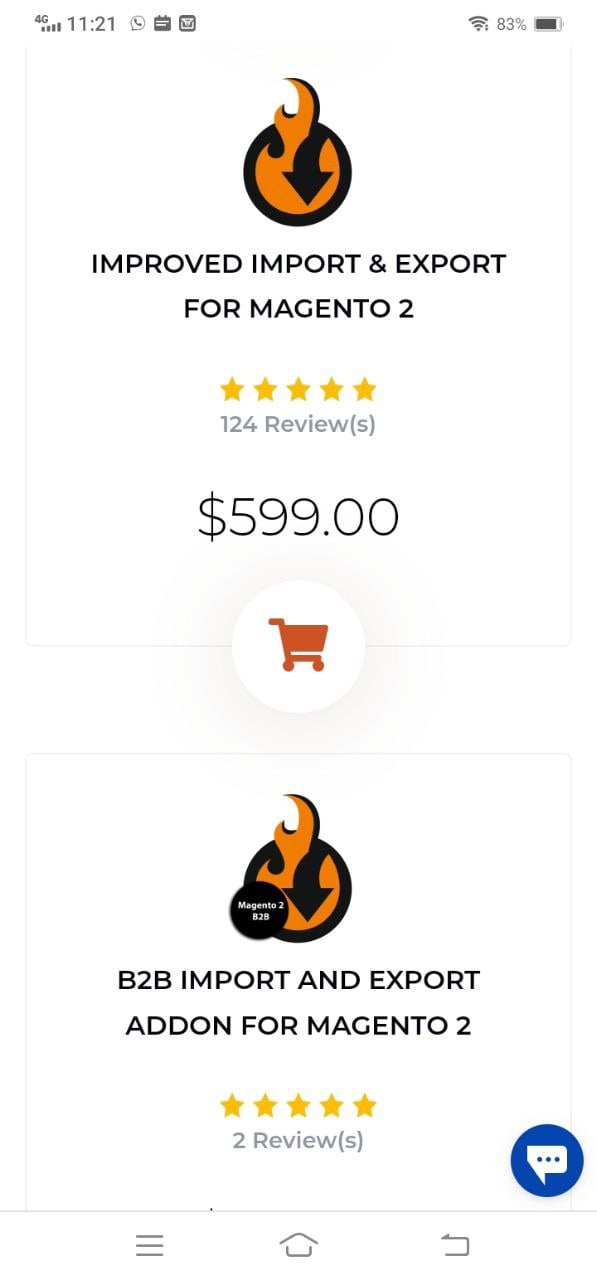
- Improve Magento internal search functionality. Configure Elasticsearch (or OpenSearch) for lightning-fast internal search. A smoother product discovery process reduces frustration, indirectly boosting SEO through higher engagement.
- Add hreflang tags for multilingual stores. If you operate internationally, implementing hreflang ensures search engines serve the right language and region-specific version of your Magento site.
- Add a custom favicon. A branded favicon strengthens recognition in browser tabs and mobile searches, improving engagement metrics and trust.
👉 When it comes to Magento and SEO, performance and user experience are inseparable. A fast, responsive site tells both customers and search engines that your store is credible, trustworthy, and worth ranking higher.
Content Optimization for Magento SEO: Keywords, Descriptions, Blogs, and Rich Content
Even the fastest Magento store won’t rank without high-quality, optimized content. In 2026, Magento SEO depends heavily on how well your product pages, categories, and supporting content align with user intent. Content is where you showcase relevance, authority, and trust. From keyword placement to schema markup, every detail matters in helping Google understand your store and in persuading customers to click “Add to Cart.”
- Use keywords naturally and strategically. Place primary and long-tail keywords in product titles, meta descriptions, headers, and category content. Avoid overstuffing — Google’s AI-driven algorithms now prioritize natural, conversational phrasing.
- Add schema markup (structured data). Implement product and review schema to generate rich snippets in search results. These not only improve visibility but also boost click-through rates.
- Optimize image SEO in Magento. Use descriptive, keyword-rich filenames and alt text. Combine this with compression for fast load times, which benefits both SEO in Magento 2 and user experience.
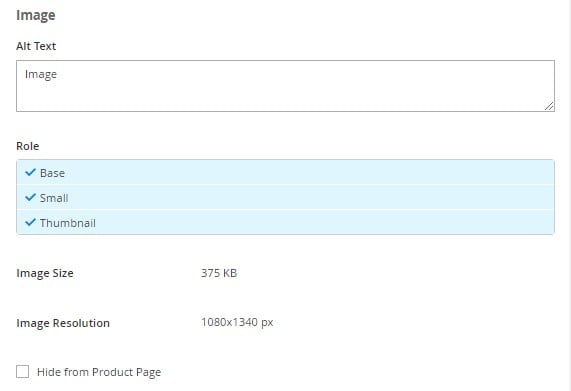
- Write unique product descriptions. Replace manufacturer copy with original, keyword-optimized descriptions. Fresh content prevents duplication issues and gives your store an edge in competitive SERPs.
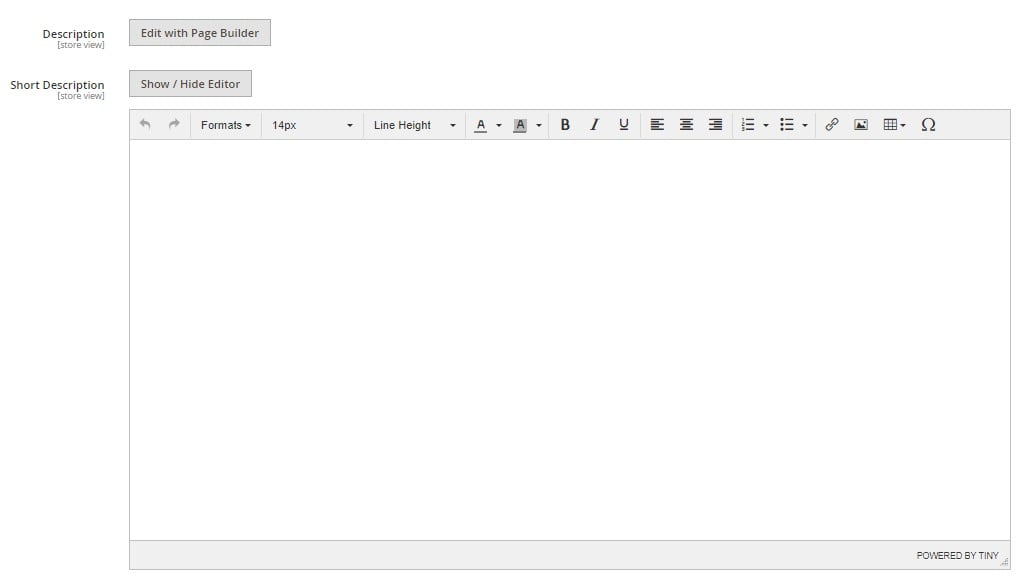
- Eliminate duplicate content. Use canonical tags to avoid indexing conflicts and ensure Google understands which version of a page is authoritative.
- Start a Magento SEO blog. Publishing regular posts targeting long-tail and trending keywords builds topical authority, keeps your site fresh, and attracts new organic traffic.
- Build backlinks with guest posting. Partner with industry blogs and media outlets to generate high-quality backlinks, which remain one of the strongest signals for Magento e-commerce SEO.
- Optimize Magento category pages. Enhance category landing pages with keyword-rich introductions, FAQs, and internal links to related products. These often-overlooked pages can become SEO powerhouses.
- Refresh outdated content. Update older product pages and blog posts with current data, reviews, and insights. Continuous updates signal freshness to search engines.
- Add product videos. Videos increase time on page, improve engagement metrics, and help your products appear in video search results.
👉 In 2026, the line between content marketing and Magento SEO disappears. Rich, optimized, and regularly updated content is what drives rankings, builds customer trust, and ultimately fuels conversions.
Magento URL & Metadata Optimization: Clean, Consistent, and Click-Worthy
Your URLs and metadata are the first impression both search engines and users get of your Magento store. A messy URL structure or poorly written meta tags can drag down rankings and discourage clicks, even if your content is strong. In 2026, Magento SEO best practices emphasize clarity, consistency, and click-worthiness. When optimized, URLs and metadata boost crawlability, improve CTRs, and ensure your store stands out in competitive SERPs.
- Use SEO-friendly Magento URLs. Shorten URLs by removing unnecessary parameters and “.html” extensions. Keep them keyword-focused and readable — e.g., /mens-running-shoes instead of /product?id=12345.

- Create a consistent URL structure. Maintain a logical hierarchy across categories and products. A clean structure improves indexing and makes navigation easier for users and search engines.
- Enable canonical URLs. Prevent duplicate content issues by using canonical tags on product and category pages. This ensures Google indexes the correct version of your content. However, if you want to build a robust GEO strategy and push your products into AI-generated responses, canonical tags are no longer efficient. You need additional GEO improvements. Follow this link to learn more: Common GEO Mistakes to Avoid in Ecommerce.

- Optimize meta titles and descriptions. Keep titles under 60 characters and descriptions under 155. Include primary keywords like Magento SEO or product-specific terms, but also make them compelling to drive clicks.
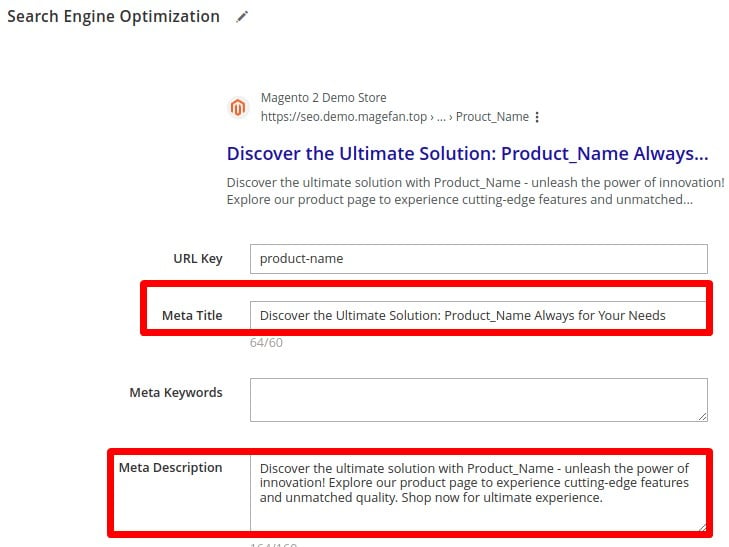
- Add unique metadata for every page. Avoid duplication by crafting distinct titles and descriptions for each product, category, and CMS page. Unique metadata strengthens SEO in Magento 2 and signals topical authority.
👉 Think of URLs and metadata as your storefront signs in search results. The cleaner and more relevant they are, the more likely shoppers — and Google — are to engage with your Magento site.
Navigation Structure for Better Crawlability and Experience
A strong navigation system is the backbone of both user experience and Magento SEO. When shoppers can easily find products, they spend more time exploring your store — sending positive engagement signals to search engines. At the same time, clear navigation and internal linking make it easier for crawlers to understand your site’s hierarchy. In 2026, improving SEO in Magento 2 means creating a navigation structure that balances user-friendly design with crawlability.
- Use breadcrumbs on product and CMS pages. Breadcrumbs clarify where users are in your store’s hierarchy and strengthen internal linking. They also generate breadcrumb-rich snippets in Google, boosting click-through rates.
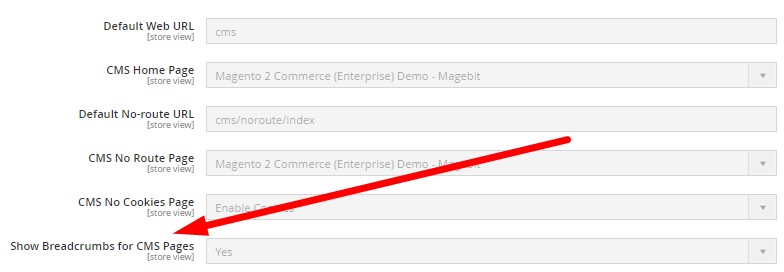
- Implement advanced layered navigation. Add faceted filters (price, size, color, etc.) to help users quickly refine search results. Well-optimized filters reduce bounce rates and encourage deeper engagement — key factors in Magento e-commerce SEO.
- Maintain a shallow site structure. Keep important products and categories within three clicks from the homepage. This ensures faster indexing and better user accessibility.
- Prioritize mobile navigation. Use collapsible menus, sticky navigation bars, and simple categories for mobile-first usability, which is now a central ranking factor.
👉 When Magento and SEO work together through thoughtful navigation, you achieve the perfect balance: a seamless shopping experience for users and a clear, crawlable path for search engines.
Linking, Redirects & On-Site Authority: Strengthen Internal SEO Signals in Magento
Internal links and redirects might not be as flashy as content or design, but they’re essential building blocks of Magento SEO. Strong linking helps distribute authority across your site, while proper redirects preserve hard-earned rankings during updates or migrations. In 2026, search engines reward Magento stores that maintain clean link structures, minimize errors, and use strategic anchor text to signal relevance.
- Set up 301 redirects after URL changes. Whenever you update or remove pages, use 301 redirects to preserve link equity and guide users smoothly to the new location. This prevents lost rankings and improves the continuity of your SEO in Magento 2.
- Regularly remove broken links. Dead links frustrate shoppers and create crawl errors. Run audits with tools like Screaming Frog or SEMrush, then clean up or redirect broken links.
- Strengthen internal linking. Connect related products, categories, and blog posts with descriptive anchor text. This improves crawl depth, spreads ranking signals, and keeps users exploring longer.
- Use contextual links in content. Add internal links naturally within product descriptions and blog articles to create SEO-rich pathways that reinforce topical authority.
👉 Effective linking and redirect strategies are silent powerhouses of Magento e-commerce SEO. They safeguard your rankings, reduce bounce rates, and help search engines understand the relationships between your pages.
Local SEO for Magento: Get Found by Nearby Customers
For merchants with physical stores or region-specific audiences, local SEO in Magento 2 is a must-have strategy. Shoppers increasingly search with phrases like “near me” or by city name, and Google’s local pack often drives more clicks than standard organic results. In 2026, optimizing your Magento store for local searches not only boosts visibility but also builds trust with customers who prefer nearby businesses.
- Optimize for local SEO. Create a dedicated store location page that includes consistent NAP details (Name, Address, Phone Number) across your website, directories, and social platforms. Consistency is critical for Magento SEO in local rankings.
- Use Google Business Profile. Claim and fully optimize your profile with accurate business info, product highlights, images, and reviews. This ensures your Magento store appears in Google Maps and local pack results.
- Add localized content. Create blog posts, landing pages, or category content tailored to regional audiences (e.g., “Best Winter Jackets in Berlin”). This strengthens SEO for Magento 2 by targeting location-based queries.
- Leverage customer reviews. Encourage satisfied local buyers to leave reviews on Google and your store. Positive reviews not only increase click-throughs but also improve local ranking signals.
👉 Local optimization ensures Magento and SEO work together to put your store on the map — literally. By appearing in regional searches, you capture high-intent customers who are ready to buy close to home.
Magento SEO Security Best Practices: Build Trust & Boost Rankings
Search engines and customers share one priority: trust. A Magento store that isn’t secure risks losing rankings, traffic, and credibility overnight. In 2026, Magento SEO goes hand in hand with robust security practices. Google favors HTTPS-enabled, regularly updated sites, while customers are more likely to buy from stores that protect their data. Strengthening your store’s defenses is not just about compliance — it’s a direct ranking and conversion factor.
- Enforce HTTPS across your site. Install SSL certificates and ensure all Magento pages use HTTPS. Secure sites rank higher and reassure shoppers that their data is protected.
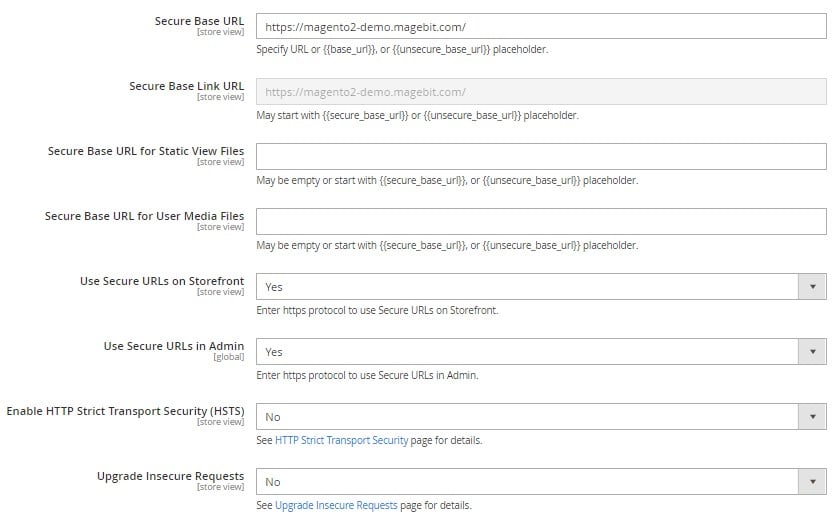
- Install Magento security patches regularly. Keeping your store updated prevents vulnerabilities that could result in blacklisting or SEO penalties from hacked content.
- Follow core e-commerce security protocols. Protect your Magento admin with two-factor authentication, limit login attempts, and enable firewalls to stop unauthorized access.
- Monitor for malware and spam. Regularly scan your store for injected code, spam links, or suspicious redirects — issues that can cripple both user trust and SEO in Magento 2.
👉 In the era of AI-driven search, Magento e-commerce SEO is about more than speed and content. A secure, trustworthy store signals authority to Google and confidence to your customers — keeping your rankings safe and your conversions steady.
Social SEO in Magento: Increase Reach, Visibility & Engagement
Social signals may not be direct ranking factors, but they play a huge role in Magento SEO by amplifying visibility and driving traffic that supports engagement metrics. In 2026, platforms like Instagram, TikTok, and LinkedIn act as discovery engines where customers research products before buying. By aligning your Magento e-commerce SEO strategy with social media, you can extend your reach, generate backlinks, and build the kind of brand authority that search engines reward.
- Engage customers on social media. Share products, promotions, and user-generated content across key platforms. Increased traffic and engagement feed back into SEO in Magento 2 by lowering bounce rates and increasing brand mentions.
- Promote blog content through social channels. Use social platforms to distribute your SEO-optimized blog posts, creating multiple entry points to your Magento store and reinforcing topical authority.
- Encourage social sharing of products. Add share buttons and incentives (discounts, loyalty points) to product pages. More shares create organic backlinks and visibility signals that indirectly support Magento SEO.
- Leverage video-first platforms. Showcase product demos, tutorials, or behind-the-scenes clips on YouTube and TikTok. Video boosts brand engagement and can help your products appear in Google’s video search results.
👉 When combined, Magento and SEO efforts with social marketing build a powerful loop: social media drives discovery, discovery leads to site visits, and site visits strengthen engagement signals that search engines can’t ignore.
Analytics, Monitoring & Continuous SEO Improvement
No Magento SEO strategy is complete without ongoing measurement. In 2026, search algorithms and user behaviors will evolve constantly, making it critical to track, analyze, and adjust your efforts. By leveraging analytics tools and continuous monitoring, Magento merchants can spot SEO issues early, fine-tune content, and ensure long-term growth in organic visibility.
- Use Google Analytics and Search Console. Monitor key Magento SEO metrics such as traffic trends, keyword rankings, and indexing errors. These insights reveal what’s working, what needs fixing, and where opportunities lie.
- Install Google Tag Manager for Magento. Manage tracking scripts in one place without touching code. This keeps your store organized, fast, and fully measurable — a win for both performance and SEO.
- Analyze and reduce bounce rates. Identify high-exit or low-engagement pages, then optimize them with faster load times, stronger content, and improved UX. Lower bounce rates are a positive signal for SEO in Magento 2.
- Track Core Web Vitals. Regularly review metrics like Largest Contentful Paint (LCP) and Cumulative Layout Shift (CLS). These performance signals directly influence your store’s rankings and customer experience.
👉 Continuous monitoring ensures your Magento e-commerce SEO efforts don’t stagnate. By making data-driven decisions, you future-proof your store against algorithm updates and maintain a steady path to growth.
Sitemap & Robots.txt Configuration: Magento SEO Tips to Guide Search Engines Efficiently
Even the best content won’t rank if search engines can’t find or index it properly. In 2026, a well-structured XML sitemap and a carefully managed robots.txt file are still cornerstones of Magento SEO. They guide crawlers to your most important pages while keeping duplicate or irrelevant content out of Google’s index. For Magento merchants, these files act as a roadmap that ensures every optimization effort pays off in visibility.
- Optimize your robots.txt file. Allow search engines to crawl essential product, category, and CMS pages while blocking duplicate or non-SEO-friendly sections (like internal search results). A clean robots.txt keeps your SEO in Magento 2 efforts focused on high-value content.
- Keep your XML sitemap fresh and relevant. Regularly update your sitemap to reflect new products, categories, and blog posts. Submit it through Google Search Console to ensure timely indexing and stronger visibility in SERPs.

- Use multiple sitemaps for large catalogs. If your Magento store has thousands of SKUs, split sitemaps into logical groups (products, categories, CMS). This improves crawl efficiency and keeps indexing errors to a minimum.
- Ensure sitemap-robots.txt integration. Reference your sitemap location in the robots.txt file, making it easier for search engines to discover and crawl your store’s structure.
👉 When configured correctly, Magento and SEO work hand in hand through sitemaps and robots.txt. They ensure search engines focus on your most valuable content — giving your products the visibility they deserve.
Advanced Magento SEO Tips for 2026: Tools, Ads & Automation
Once you’ve mastered the fundamentals, it’s time to take your Magento SEO to the next level. In 2026, advanced strategies focus on automation, data-driven insights, and multi-channel visibility. By combining the right tools, ads, and extensions, you can streamline workflows, enhance your store’s presence across Google, and maximize ROI — all while staying ahead of algorithm changes.
- Set up Google Shopping Ads integration. While not a direct SEO factor, Google Shopping campaigns drive targeted traffic and boost engagement metrics like click-through rate (CTR) — signals that indirectly support SEO in Magento 2.
- Use Magento SEO extensions for automation. Tools like Amasty SEO Toolkit, Mageworx SEO Suite, or Firebear’s Improved Import & Export extension simplify complex tasks such as metadata management, schema generation, redirects, and bulk updates.
- Leverage AI-driven SEO tools. Platforms that use machine learning can suggest keyword opportunities, predict trends, and identify content gaps specific to Magento e-commerce SEO.
- Automate routine SEO audits. Schedule checks for broken links, duplicate content, and sitemap health. Automated reporting keeps your Magento SEO strategy proactive instead of reactive.
- Experiment with structured data beyond basics. Extend schema to cover FAQs, how-tos, and video content. This expands your chances of winning rich results in AI-enhanced SERPs.
👉 By embracing automation and advanced tools, you turn Magento and SEO into a scalable growth engine. These strategies free up time, reduce errors, and ensure your store adapts quickly to the future of search.
15 Common SEO Mistakes Most Magento Stores Make (and How to Fix Them)
Even technically advanced Magento 2 stores can struggle in search rankings if common SEO pitfalls go unnoticed. From duplicate content to slow loading speeds, these mistakes silently harm visibility, user engagement, and conversions. Below are the 15 most frequent Magento SEO mistakes in 2026, each explained with the problem and a clear solution.
1. Duplicate Content Across Products and Categories of Your Store Are Still Bad for Magento 2 SEO
The problem: Reusing the same product descriptions, category text, or filtered URLs confuses search engines and dilutes your SEO in Magento 2 performance.
The solution: Use canonical tags to signal which page should be indexed. In Magento, enable canonical URLs for both products and categories. Block parameterized filter pages via robots.txt or apply canonical tags to point to the base version.
2. Missing or Non-Descriptive Image Alt Tags Negatively Affect SEO in Magento 2, Even in 2026
The problem: Search engines can’t “see” images without alt text, meaning you lose out on image search rankings and accessibility benefits.
The solution: Add descriptive, keyword-rich alt text to every product and category image. In Magento, this can be done directly in product media settings. Think natural phrases like “eco-friendly bamboo toothbrush set” instead of “product1.”
3. Default or Generic Meta Titles and Descriptions Are Better Than Nothing, But Still…
The problem: Leaving metadata as “Home Page” or using duplicate descriptions weakens relevance and lowers click-through rates (CTR).
The solution: Write unique, keyword-optimized titles and meta descriptions for every page. Include your value proposition and use natural language — e.g., “Best Organic Skincare – Free Shipping on All Orders.”
4. Keyword Stuffing in Content Is No Longer a Working Magento SEO Tactic
The problem: Overloading content with repeated keywords signals spam to search engines and makes pages unreadable.
The solution: Write for people first. Use keywords naturally in titles, meta tags, and headings, and enrich content with semantically related terms. Focus on addressing user intent rather than keyword density.
5. Indexing Internal Search Results Pages Won’t Be Helpful At All
The problem: Allowing internal search pages to be indexed creates hundreds of low-quality, duplicate pages that waste crawl budget.
The solution: Add a noindex tag to all internal search results pages and disallow them in robots.txt. In Magento, layout updates or SEO extensions can automate the noindex directive.
6. Missing or Outdated XML Sitemap Is The Worst Enemy of Search Engines
The problem: Without an up-to-date sitemap, search engines may miss critical pages or take longer to index new content.
The solution: Enable Magento’s XML sitemap feature and configure it to update dynamically. Submit it to Google Search Console and Bing Webmaster Tools, and schedule frequent refreshes as your catalog grows.
7. Low-Quality or Irrelevant Backlinks Reduce Your Growth Rather Than Help
The problem: Spammy backlinks from unrelated domains can trigger manual penalties and harm domain authority.
The solution: Build links from relevant, high-authority sources like industry blogs, partners, or niche directories. Use tools like Ahrefs or SEMrush to audit your profile and disavow harmful links.
8. Improperly Configured Robots.txt File Is the Synonym of Poor Indexing
The problem: Blocking important sections or leaving irrelevant ones open to crawlers leads to poor indexing and wasted SEO effort.
The solution: Review your robots.txt carefully. Keep product and blog sections crawlable, while disallowing internal search and faceted navigation. Test updates in Google Search Console before publishing.
9. Generic Homepage Title: Don’t Waste Magento’s Built-in SEO Potential
The problem: A homepage titled only “Home” wastes a prime SEO opportunity and weakens brand recognition.
The solution: Write a homepage title with your brand and target keywords. Example: “Sustainable Outdoor Gear | EcoTrail – Magento 2 E-Commerce Store.”
10. Indexing Both HTTP and HTTPS Versions: Opt for the Secure Version
The problem: Allowing both versions creates duplicate content and splits link equity.
The solution: Force HTTPS across your Magento store. Use 301 redirects to route HTTP traffic to HTTPS, and set your preferred domain in Google Search Console.
11. Ignoring Mobile Optimization Is Unforgivable in 2026
The problem: With mobile-first indexing, a non-responsive store will tank in rankings. In 2026, mobile is the primary device for most shoppers.
The solution: Use a responsive Magento 2 theme, optimize menus, buttons, and images for mobile, and test regularly with Google’s Mobile-Friendly Test and PageSpeed Insights.
12. Slow Page Load Speed – Tombstone of Your Magento 2 Website
The problem: A sluggish store drives away customers and signals poor UX to search engines, lowering both rankings and sales.
The solution: Enable full-page caching, minimize CSS/JS files, compress media, and integrate a CDN. Regularly benchmark performance with Lighthouse or GTmetrix and fix bottlenecks.
13. Skipping Structured Data Markup Won’t Cut It Anymore
The problem: Without schema, your products miss out on rich snippets like review stars, prices, and availability — lowering click-through rates.
The solution: Implement a schema for products, reviews, and breadcrumbs using a Magento SEO extension or Google Tag Manager. Rich snippets enhance visibility and trust in SERPs.
14. Weak Internal Linking: It’s Time to Put This Embarrassment Behind in 2026
The problem: A shallow or random internal link structure makes it harder for crawlers to understand your site and reduces user engagement.
The solution: Interlink related products, categories, and blog posts with descriptive anchor text. Internal links distribute authority and guide both search engines and shoppers through your store.
15. Inconsistent URL Structures: Quit Frightening Your Magento 2 Customers and Search Engines
The problem: URLs with inconsistent formatting — underscores, mixed casing, or random parameters — look messy and harm crawlability.
The solution: Standardize your URL keys in Magento. Use clean, hyphen-separated formats and apply canonical tags or 301 redirects to prevent duplication.
Avoiding these 15 Magento SEO mistakes can dramatically improve your store’s search visibility, engagement, and conversions. Whether you’re a developer fine-tuning technical SEO or a store owner managing content, fixing these issues ensures your Magento 2 SEO strategy stays competitive in 2026’s fast-changing search landscape.
Magento 2 SEO Tools & Extensions: Must-Have Solutions for 2026
Even the best Magento SEO guide won’t deliver results without the right tools. While Magento 2 includes strong native features, dedicated Magento SEO extensions can automate time-consuming tasks, prevent costly errors, and unlock advanced functionality. In 2026, merchants who want to dominate organic search must rely on the best SEO modules to manage everything from structured data to canonical tags, redirects, and site performance.
Extensions play a vital role in Magento e-commerce SEO by:
- Automating metadata generation for thousands of products.
- Adding structured data (schema) for rich snippets.
- Managing canonical tags and duplicate content.
- Simplifying redirects and URL rewrites.
- Enhancing site performance with caching and integrations.
Below are some of the most popular and effective SEO tools for Magento 2, including both free and paid options.
🔧 Amasty SEO Toolkit for Magento 2
Amasty SEO Toolkit is one of the most comprehensive solutions on the market. It combines multiple SEO functions into one module — managing meta tags, rich snippets, sitemaps, canonical URLs, and advanced breadcrumbs. For merchants who want an all-in-one package, this is among the best Magento SEO extensions available.

🤖 Toogas AI SEO Optimizer
leverages artificial intelligence to create optimized meta titles and descriptions automatically, following the latest Magento 2 SEO trends in 2026. It’s especially valuable for stores with large catalogs, where manual optimization is unrealistic. This extension ensures consistent, keyword-rich metadata aligned with SEO in Magento 2.
📊 Webkul Advanced SEO Manager
is designed for merchants seeking granular control over their SEO. It provides tools for meta tag templates, XML and HTML sitemaps, robots.txt management, and canonical URL handling. The module helps prevent duplicate content issues while boosting your Magento site’s crawlability.
🚀 Mageworx SEO Suite Ultimate
Mageworx SEO Suite Ultimate is a premium extension that goes beyond basics. It automates metadata, generates advanced sitemaps, manages hreflang tags for multilingual stores, and adds extended structured data. For global stores, this tool is particularly effective in aligning Magento SEO with international strategies.
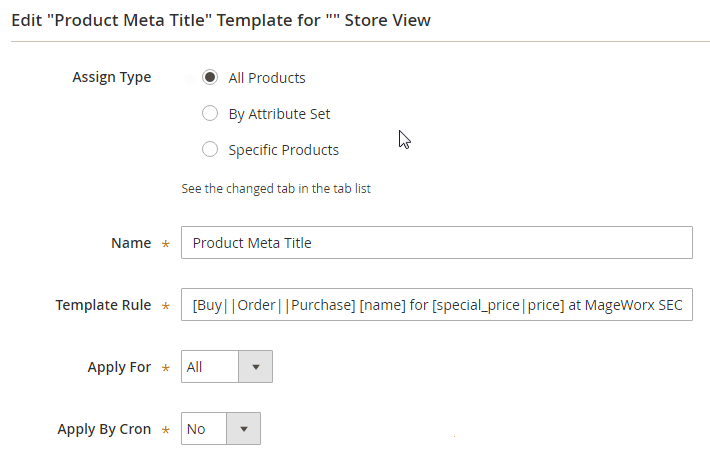
⭐ OuterEdge Structured Data Module
And if you are looking for something free and basic to optimize Magento 2 SEO, try . It focuses specifically on schema markup. The module enhances product pages with structured data for reviews, ratings, availability, and pricing, helping your store earn rich snippets in Google results. While narrower in scope, it’s a must-have if you want to maximize visibility in AI-powered search results.
👉 The bottom line: no matter the size of your store, investing in the right Magento SEO extensions saves time, prevents errors, and positions your site for long-term success in search. A balanced toolkit — combining AI automation, structured data, and technical optimization — ensures your store is ready for 2026 and beyond.
Final Words: Unlock Your Magento SEO Potential in 2026
In 2026, Magento SEO isn’t just a tactic — it’s a competitive necessity. If you want your Magento 2 store to thrive, you need a clear, platform-specific strategy that strengthens visibility, attracts qualified traffic, and drives steady conversions. A generic SEO checklist won’t cut it anymore — only a Magento SEO guide tailored to the platform’s unique architecture can keep your store ahead.
With the 55 actionable Magento SEO tips outlined above, you can fine-tune every aspect of your site — from Core Web Vitals and mobile-first design to structured data and clean URLs. Just as importantly, by avoiding the 15 most common Magento SEO mistakes, you’ll protect your rankings from silent killers like duplicate content, crawl inefficiencies, and poor page performance.
But here’s a crucial element many merchants overlook: data management. The way you import products, update metadata, and restructure categories directly shapes how search engines crawl and understand your store. Disorganized or outdated data doesn’t just create operational headaches — it damages your SEO in Magento 2.
That’s why we recommend the Improved Import & Export extension for Magento 2. This all-in-one tool automates and optimizes data workflows so your store remains consistent, crawlable, and SEO-ready. Whether you’re bulk-updating product metadata, migrating thousands of SKUs, or remapping category structures, the extension ensures precision and speed.
How Better Data Management Supercharges Magento SEO
- Fresher content: Automated imports keep your catalog updated, signaling freshness to search engines.
- Stronger metadata: Accurate bulk updates eliminate defaults and duplications, helping you rank for targeted keywords.
- Clean URL structures: Structured imports preserve consistency and reduce the risk of broken links.
- Optimized navigation: Category mapping refines site architecture and internal linking, boosting crawlability and UX.
In short, well-optimized data flows are the hidden engine of Magento SEO. They make your store more agile, more user-friendly, and more aligned with search engine expectations.
👉 Ready to strengthen your Magento SEO foundation? Contact the Firebear team to learn how the Improved Import & Export extension can transform your workflows.
Your Magento SEO strategy doesn’t end here — it evolves. Stay updated on best practices, monitor performance, and keep testing new approaches. With the right tools and mindset, your Magento store can climb the rankings, outpace competitors, and turn search visibility into consistent growth.
Frequently Asked Questions About Magento SEO
What is Magento SEO?
Magento SEO is the process of optimizing Magento 2 stores for search engines. It includes improving site structure, speed, content, metadata, and user experience so products rank higher in SERPs and attract more organic traffic.
Does Magento 2 have built-in SEO features?
Yes. Magento 2 comes with several native SEO features such as XML sitemaps, canonical tags, meta title and description fields, and URL rewrites. However, to maximize results, most merchants use Magento SEO extensions.
Why is Magento SEO important for e-commerce?
Magento SEO drives free, high-quality traffic to your store. A well-optimized Magento site improves visibility, user trust, and conversions — helping you reduce dependence on paid ads.
What are the most common Magento SEO mistakes?
The biggest mistakes include duplicate content, slow site speed, generic metadata, indexing internal search results, and weak internal linking. Avoiding these issues is critical to keeping your Magento SEO strong.
How can I improve Magento 2 site speed for SEO?
Enable full-page caching, compress images, minify CSS/JS, and use a CDN. Speed is a key ranking factor in Google’s Core Web Vitals and directly impacts both SEO and conversions.
Do I need Magento SEO extensions?
Yes, if you want advanced functionality. Extensions automate metadata creation, manage structured data, handle redirects, and optimize large catalogs — making SEO in Magento 2 much more efficient.
What is the best Magento SEO extension?
Popular choices include Amasty SEO Toolkit, Mageworx SEO Suite Ultimate, Webkul Advanced SEO Manager, and OuterEdge Structured Data. The right option depends on your store size and SEO needs.
How do I optimize Magento product pages for SEO?
Use unique product descriptions, keyword-rich titles, optimized images with alt tags, and structured data for reviews and pricing. Adding FAQs and videos also helps boost rankings.
Does Magento support local SEO?
Yes. By creating dedicated store location pages, adding hreflang tags, and optimizing your Google Business Profile, Magento stores can perform well in local search results.
How often should I update my Magento SEO strategy?
Review your SEO every 3–6 months. Search algorithms, customer behavior, and competition evolve constantly. Updating your Magento SEO ensures your store remains competitive and aligned with 2026 best practices.









